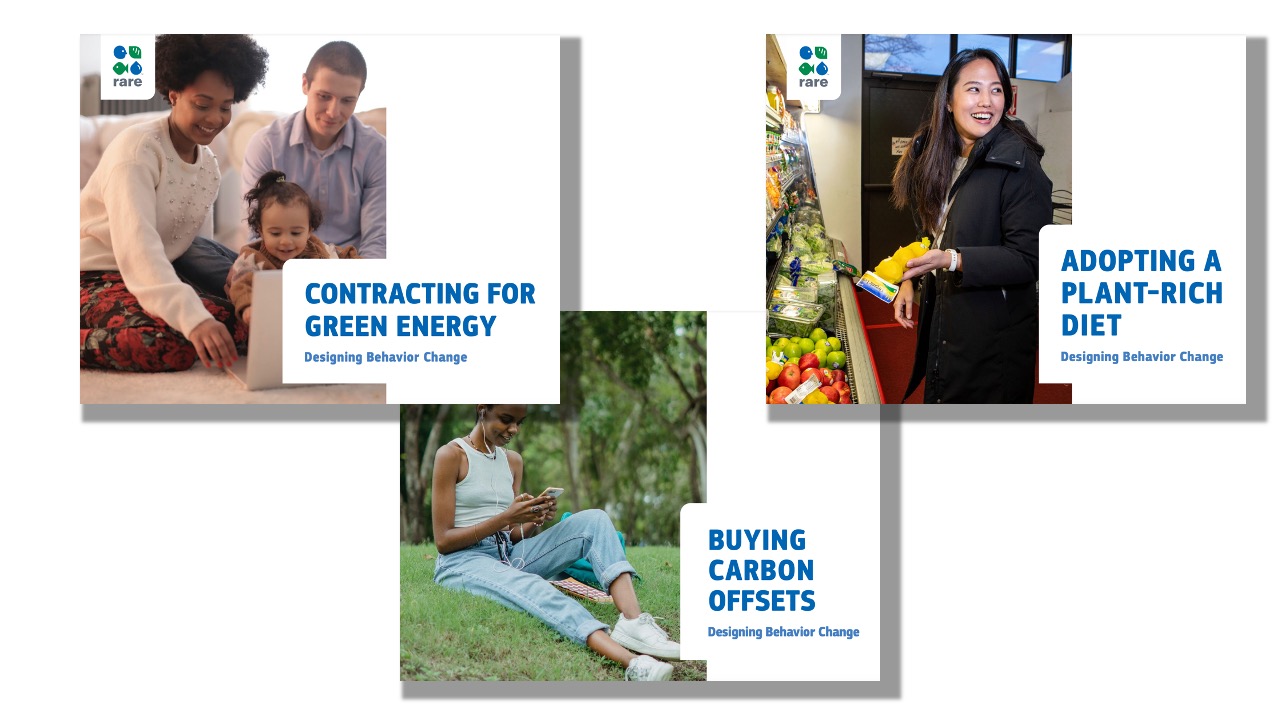“Nothing I do will matter.”
That’s the thinking that often comes up when any of us think about climate change. The challenge seems enormous, and your personal contribution to the effort might seem like a drop in the ocean, even if you sold all your belongings to go live in a yurt.
But that drop in the ocean has ripples. Personal actions, taken together, can have a surprisingly large impact. While solving the crisis will take change at the national and international level, individual and community-level change can trigger that wider change by shifting the norms to which governments and corporations respond. Reports from both Rare’s Center for the Behavior and Environment and Project Drawdown have examined the solutions at the individual and household level, finding that actions like eating more veggies, driving electric vehicles, and switching to green energy can massively reduce the emissions that worsen climate change.
What’s Been Missing
The challenge is that these great reports aren’t likely to lead us to make these important changes in our lives. Behavior science tells us that information alone doesn’t compel us to act. And it’s difficult to imagine how we might collectively move to adapt our eating, switch how we power our lives, or change how we get around.
That’s why it’s so important that we have a practice of imagining what that journey of change to a better future would look like, and how we could take it together using best practices and insights from behavioral science, service design, and marketing. Reports can tell us what we need to do, but journeys can guide us on how to orchestrate changes that people just might love.
We’re Sharing How
We all need to be able to create the pathways for people to move to better, healthier, more sustainable choices—journeys that can spark and accelerate the system changes we all need. So we’re sharing a series of guides on what to consider when crafting a journey of adoption and examples of how to go about it.
Along with our partners at Harmonic Design, we brought together experts in behavior science, food, energy, and carbon offsets to create guides that show the key considerations for adoption of specific climate-positive behaviors and example journeys envisioning what desirable behavior change looks like.

These guides are available here, and we will be highlighting them in the coming weeks. If you have questions about how you might use these “Journey Books” in your work, email us at mip@rare.org and let us know which guides you’re most interested in.
We hope you do. Because we need people to vote with their feet to bring about systems change even faster; and the most effective journeys of change will be brought about through the relationships people already have, the solutions that already exist, and the organizations with the ability to imagine and bring about the future we need.